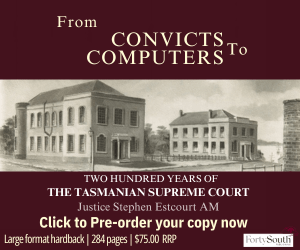In the recent cases of Holford & Lorton1 and Gavan & Mickell,2 the Federal Circuit and Family Courtof Australia determined whether applications to restrain solicitors from acting were valid on the basis that a conflict of interest existed.
Holford & Lorton
Background
The applicant (Mr Holford) sought to have the respondent’s (Ms Lorton) solicitor(Ms Farmer) restrained from acting for her in the proceedings.
Ms Farmer previously represented both parties in a personal violence restraining order. Further, Ms Farmer represented the applicant’s company in a commercial dispute. The applicant argued that Ms Farmer’s involvement with his company meant that she may have received information which could be misused and therefore impacted the integrity of the proceedings.
Issues considered
The court turned to the three established categories which form the basis to restrain a solicitor from against a former client:3
- breach of confidence
- breach of fiduciary duty
- inherent jurisdiction of a court over its officers and to control its process.
The court referred to the judgement in McMillan & McMillan4 and requested proof of the existence and nature of the purported confidential information from the applicant.5
However, the applicant failed to provide the relevant confidential information. The court recognised that a conflict of interest possibly existed, but without the identification of the relevant information, the court dismissed the application.6
The decision in this case can be contrasted to the judgment in Gavan & Mickell.
Gavan & Mickell
Background
The applicant sought to restrain her ex-husband’s solicitors (Coleman Greig Lawyers) from continuing to act for him on the basis that a solicitor (Ms T) currently employed by the firm previously acted for her in proceedings.
The applicant was concerned that Ms T was in possession of confidential information relevant to the current proceedings and that the information was already imparted to the solicitor with carriage of the matter.
Issues considered
The court turned to the decision in Osferatu & Osferatu7 and noted the same established categories upon which a solicitor may be restrained from acting as discussed in Holford.
In this case, the court found no potential breach of fiduciary duty.
Breach of confidence
There was no dispute that Ms T was exposed to and was in possession of confidential information having worked directly with the applicant. The main issue considered by the court was whether there was a ‘real risk’ of disclosure of confidential information.8
The husband argued this issue was addressed as a result of the steps taken by Coleman Greig, given:
- The solicitor with the carriage of the matter and Ms T worked in different offices.
- There were different supervisors assigned to the solicitors.
- There was an IT barrier authorised by the firm to prevent Ms T from accessing the files.
- Ms T offered an undertaking not to disclose information about the case.
The court considered the geographical distance between the solicitors to be a significant factor in the submissions. However, there was no explanation to address the extent of the interactions of the firm’s family lawyers. Therefore, the court was not persuaded that the steps taken by the firm reduced the risk to the level of no longer being a ‘real risk’.9
Inherent jurisdiction
The court referred to the principle established in Kallinicos v Hunt10 and noted “whether a fair-minded, reasonably informed member of the public would conclude that proper administration of justice requires that a legal practitioner should be prevented from acting…”11 Even if there was no real risk of disclosure, the court noted that its inherent jurisdiction was an independent basis for restraining a solicitor from acting.12
The court noted that a point of distinction between this case and similar cases was that the solicitors worked in different offices. However, it was a firm that remained in one city. The court was of the view that whilst an injunction would limit the husband’s choice of solicitor, it was not a solicitor who had been acting for him for a substantial period – the court noted that there would be alternative options for the husband given the size of the legal market in Sydney. This contrasted the wife’s position, in which the court recognised that changing solicitors would not address the issue.13
Whilst the court considered the arrangements put in place by Coleman Greig, it concluded that it should be restrained from acting. The court was satisfied that there was a real risk of disclosure and independently it would have nonetheless exercised its inherent jurisdiction in restraining the husband’s solicitors from acting.14
See also Chinese walls just got harder to build.
Footnotes
1 Holford & Lorton [2021] FedCFamC1F 267, 48 (Holford).
2 Gavan & Mickell [2021] FedCFamC1F 280, 31 (Gavan).
3 Holford (n1) 48.
4 (2000) FLC 93-048.
5 Holford (n1) 53.
6 Ibid 57.
7 [2015] FamCAFC 177.
8 Gavan (n2) 31.
9 Ibid 36.
10 [2005] NSWSC 1181, [76].
11 Gavan (n2) 37.
12 Ibid 40.
13 Ibid 46.
14 Ibid 48.













Share this article